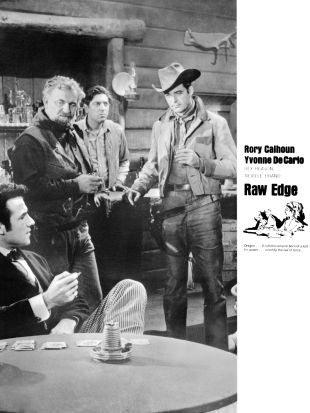John Sherwood was a longtime assistant director in Hollywood who also directed three movies of his own near the end of his tragically shortened life and career. Born in New York City in 1903, he joined the movie industry in the early 1930s through the art department at RKO. As an employee of the latter, he contributed to several mid-1930s movies, including William Wellman's romantic/adventure yarn Stingaree (1936). He moved up to assistant director on Follow The Fleet that same year, and left RKO soon after for a brief stay at the short-lived Grand National studio, where he worked on a pair of James Cagney features, Great Guy and Something To Sing About, which were probably the most notable and well-remembered pictures in the company's output. Sherwood worked for independent producers Sol Lesser and Hal Roach for a time, and was one of the army of people involved in the making of Gone With The Wind, before moving on to steady work on a string of Samuel Goldwyn productions in the early/middle 1940s. He was later an assistant director on several International Pictures productions, including Tomorrow Is Forever (1946), and became an employee of Universal Pictures after that studio's merger with International Pictures (as Universal-International). At Universal, Sherwood served as an assistant director on movies by the likes of Douglas Sirk, Anthony Mann, and, most notably, Jack Arnold.
Sherwood moved into the director's chair for the first time on the offbeat psychological western Raw Edge (1956) with good results, both critically and commercially. He attracted somewhat more attention, however, with The Creature Walks Among Us (1956), the second (and last) sequel to Creature From The Black Lagoon, which Arnold had directed. And it was Arnold's co-authored script that gave Sherwood his last (and best) directorial opportunity, with the sci-fi/horror film The Monolith Monsters (1957). The latter, a highly unusual film of its kind, both for its story and the particular monsters involved (extra-terrestrial crystals that grow to immense proportions and multiply, destroying everything in their path), was successful in its time and has become one of the most highly appreciated of Universal's middle/late 1950s monster movies for its pacing and the effective direction of the actors. Sherwood was back as an assistant director on Arnold's psychological western No Name On The Bullet (1959), and was then assigned as second unit director on Michael Gordon's Pillow Talk (1959), a big-budget Doris Day/Rock Hudson vehicle. He was sent to New York on the latter picture to shoot second unit footage and, while there, contracted pneumonia. He died in March of that year in New York City, at the age of 56.


